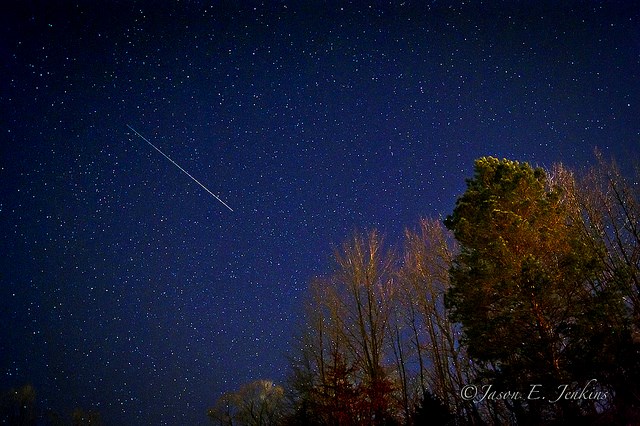Having a spotted a few early nighttime meteors shooting through the sky already, The Undercurrent called up local telescope builder, star-gazer and former planetarium director Robert Ballantyne for the low-down on the Geminid meteor shower, which will be at its peak this week.
“I’ve seen a lot of meteors in my time and it’s a bit cold out there for me,” says Ballantyne. “But I remember, in Ottawa there was a facility where you could lie in these coffin-type things to stay warm while observing a meteor shower. There were eight boxes for eight people to view the entire sky during an organized observing session.”
Ballantyne, who was a show producer at the McLaughlin Planetarium of the Royal Ontario Museum from 1968-1976 and then went on to be the director of the Manitoba Planetarium, has countless stories of star-gazing. He also likes to ensure that people know what they’re looking at.
“A meteoroid is a small chunk of debris floating around in space, orbiting the sun. A meteor is what we see – a streak in the sky, this is the meteoroid burning up as it moves into the earth’s atmosphere. A meteorite is what it’s called once it’s a chunk of rock or metal lying on the ground,” says Ballantyne.
Ballantyne goes on to tell the story of a comet or meteroid that exploded in the atmosphere above Siberia in 1908.
“It was a really big deal, like a nuclear blast,” he says. “Trees were flattened for a radius of something like 2,000km, but this is not something we need to worry about. In fact, it is estimated that the weight of the earth increases by several tonnes every day because of all the debris from space that lands here.”
On any dark clear night, on average, a person with good eyesight should see about seven stray meteors per hour, Ballantyne adds, going on to explain that this is all part of the ongoing formation of the solar system and the planets.
“The theory goes that these bits and pieces orbiting the sun started bumping into one another as they got more dense. They aggregated more material and grew bigger, and with that came a greater gravitational pull, so they became the planets, and just kept growing and growing. The meteors we see are part of this continuing process.”
In any case, the Geminid meteors will be at their densest on the night of December 13th and 14th.
“Midnight and after is typically a good time to be out observing them,” says Ballantyne. “You want clear, dark skies, and if you want to see a lot of them, watch for the faintest ones. The waning crescent moon won’t rise and lighten the sky until about 4am. The peak of the shower will be on December 13 at 11pm. Enthusiasts are hoping for up to 120 meteors per hour. This may be the best shower of 2017.”
If, by chance you wanted to map your sightings on a Star Map, you would discover that all the shower meteors will seem to be radiating from the constellation of Gemini.



